In episode 127, I welcomed James Thorn, an author of dystopian and post-apocalyptic fiction and Story Grid Certified editor. We discussed the opening of Toasha Jiordano's Epoch Earth: The Great Glitch and how you can discover reader expectations related to your sales category.
We talk about how dystopian and post-apocalyptic fiction are similar and different, and which must-have elements will help you tell a satisfying story in these categories. The editorial mission encourages you to discover the specific sales category expectations for your story, whether it's dystopian fiction, a category romance, a character-driven literary novel, or something in between.
Listen to the Writership Podcast
Note to the Author
Dear Toasha,
Thank you so much for sharing your story with us! You have a great premise for a dystopian story. The scene includes what we call a Save the Cat moment (when we immediately identify with and root for a character because they do something kind). The protagonist’s innocence is ripped away by a traumatic event, but she is able to protect her brother. That’s a big dramatic moment that really works, and it speaks to her potential to do what’s necessary in the story’s main conflict.
Our biggest suggestion for you here has to do with this scene as the opening of the story and reader expectations for this particular genre and sales category.
Genres and Sales Categories or Styles
Before I get into our specific advice for you, I want to talk about genre generally. Genre is a label that is a sort of shorthand for what the reader can expect in the story. Sometimes we use genre when we mean sales category, so it’s important for revision purposes to unpack what these terms mean. You’ll want to meet the reader expectations for both genre and sales category.
Content genres are what we’re talking about when we focus on a particular type of protagonist and the specific change they experience over the course of a story. Here are a few examples:
A hero risks her life to defeat the villain and save the victim (Action).
Multiple characters who are part of an underclass within a society expose the hypocrisy of tyrants to gain power (Society).
A stranger who lives outside society comes to town to right a wrong (Western).
A naïve protagonist with simplistic beliefs about life encounters a challenge and chooses to adopt a more nuanced view of the world (Worldview-Maturation).
Sales categories generally indicate where you would shelve your story in a book store. In Story Grid terms, these extra elements might relate to a particular setting, but could also include any of the following:
Style genres describe how we experience the story. Examples include comedy, drama, or epistolary styles.
Reality genres describe how much the reader must suspend disbelief. Your story could be, for example, fantasy, realism, or factualism.
Each choice comes with specific reader expectations, and while you want to consider them as a whole, it’s useful to understand them separately too.
Dystopian novels, like your story here, typically have Society for the Content Genre with specific elements of fantasy. They can be comedic, dramatic, epistolary, etc., in style.
Because Dystopian stories focus on “bad places” and the power clashes within them, readers typically expect to be introduced to the world before an inciting incident upsets the character’s status quo. The reader needs a context to help them place the events of the inciting incident in perspective.
The Hunger Games is a great model for this. The mundane world is revealed, and from that foundation, the inciting incident forces Katniss Everdeen to choose between suicide or her sister’s death. It’s a powerful way to open and pull the reader into the story.
The category has shifted from the twentieth century focus on political and economic struggles (as seen in Animal Farm and Brave New World) to a focus on Young Adult coming-of-age stories with female teenagers as protagonists. This becomes the source of the huge power differential you need for a society piece.
Dystopian stories examine gender roles and identity, race, or the distribution of wealth, among other elements, where certain groups gain power over others. These stories are popular, which makes sense when you consider “Society stories are about experiencing the fear and exhilaration of rebelling against the establishment without the risk. Exploring themes of power and powerlessness.” The dystopian arc is about whether justice will be served from the bottom up by an “everyperson” protagonist (as opposed to a heroic one).
Young women historically are among the most powerless members of society. Adolescents are old enough to no longer need adult protection (though they still need love and guidance), but they aren’t yet autonomous adults. Physiologically they are going through big changes, which impacts their emotions, and they get a bunch of guff and pressure related to who they are, how they’re showing up, and what they are going to do in life. (This makes me think of the Twisted Sister song “We’re Not Going to Take It,” a great adolescent anthem of rebellion.)
Not all Dystopian stories must start the way The Hunger Games does, but the dystopian reader needs to understand the world where the events are unfolding. Society stories are allegories we use to make sense of our own times, and we need a firm grounding from which to compare them.
Post-Apocalyptic Stories
Post-Apocalyptic stories are different and the readers of these stories have different expectations. For example, The Walking Dead, we’re dropped right into the thick of things because it’s more about action or horror than power struggles within society. There’s a lone cowgirl or cowboy figure, and the core emotion (what we go to these stories to feel) is excitement. The life value isn’t power and impotence, but life and death.
There clearly are life and death struggles in dystopian stories, but the story doesn’t on that value. Another way to say this is that the primary question in our minds in a post-apocalyptic action or horror story is, will the protagonist survive? In a dystopian society story, the question that drives us forward is, will the revolutionaries successfully overthrow the tyrants?
In this opening, we’re dropped into action right away, which is more of a post-apocalyptic convention. You’ve already published the story, so you wouldn’t necessarily want to change it, but it’s something to consider for future stories.
Unrelated to the genre, we wanted to mention point of view because we’re in first person point of view (past tense), which means we could potentially feel what Synta feels and notice what she notices, but the language feels almost journalistic. We have the opportunity for close narrative or psychic distance, but the language keeps us at arms’ length from her, even though when she’s telling us about this, she’s recounting these events at a later time. It seems at odds with how she interacts with her brother. There might be a reason to have her narration be detached in this opening, but I wanted to mention it to see if it’s intentional.
Thanks again for sharing your scene with us, Toasha!
All the best,
Lesli
Editorial Mission—Investigate Your Genre and Sales Category
It's important to understand what your typical reader expects to find in your story. But how do you discover them? This mission is designed to show you how.
First, nail down your content genre, that’s one of the twelve main content genres. (Episode 118 focuses on content genres and how to choose one.)
Nail down the sales category. Find books that are similar to the story you want to tell in content genre, style, and level of reality, and keep a list of the sales categories associated with them.
Find out what readers of the content genre and sales category want? Read books in that sales category and read their reviews (particularly the reviews that rate the book from two to four stars). What do you notice? What do reviewers mention? Keep a list.
When you want to focus on innovating the way you meet reader expectations, read books and watch movies outside your genre and category for inspiration.
Go to Amazon to find what’s selling in your sales category. Study titles, covers, descriptions. As James mentioned, this will show you the difference between “what people say they want” in reviews and what they are opening their wallets for.
Wise Words on Dystopian Fiction
“Quite how Dystopia has gone from a literary form beloved of the political satirist to a cinematic genre beloved of YA franchises is a bit of a mystery. While Nineteen Eighty-Four and Brave New World will forever be the great twin pillars of Dystopian fiction of the 20th century, so far in the 21st century nightmare futures largely been a metaphor for “grown ups don’t understand me” while that near-cousin of the dystopia-the post apocalypse has grown more and more popular. Writers seem more interested now in how humanity deals with a complete breakdown of society (whether it be because of famine, disease or zombies) rather than a society which is deliberately broken to favour the few.”
Our Submission
Want to find out what happens to Synta? You can read on here.
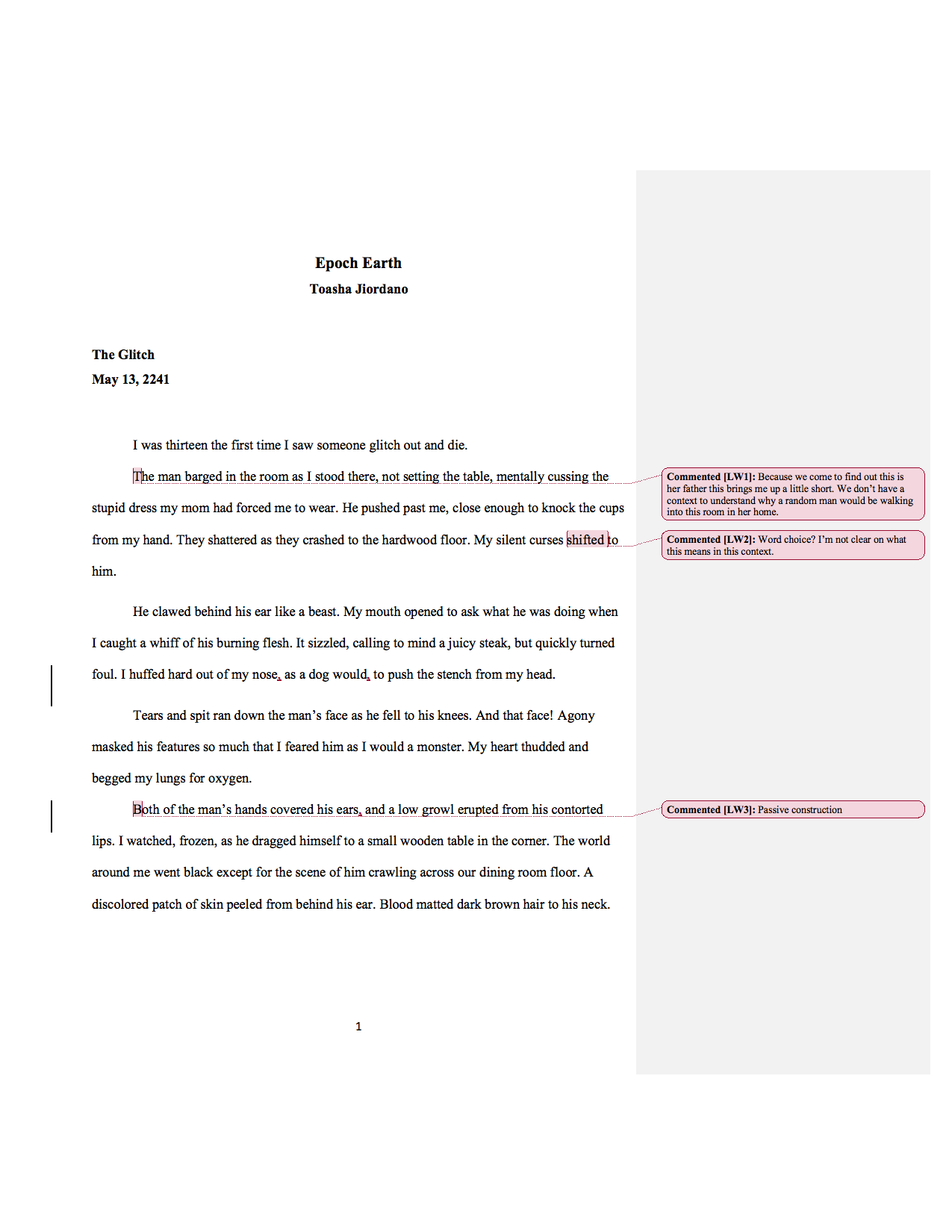
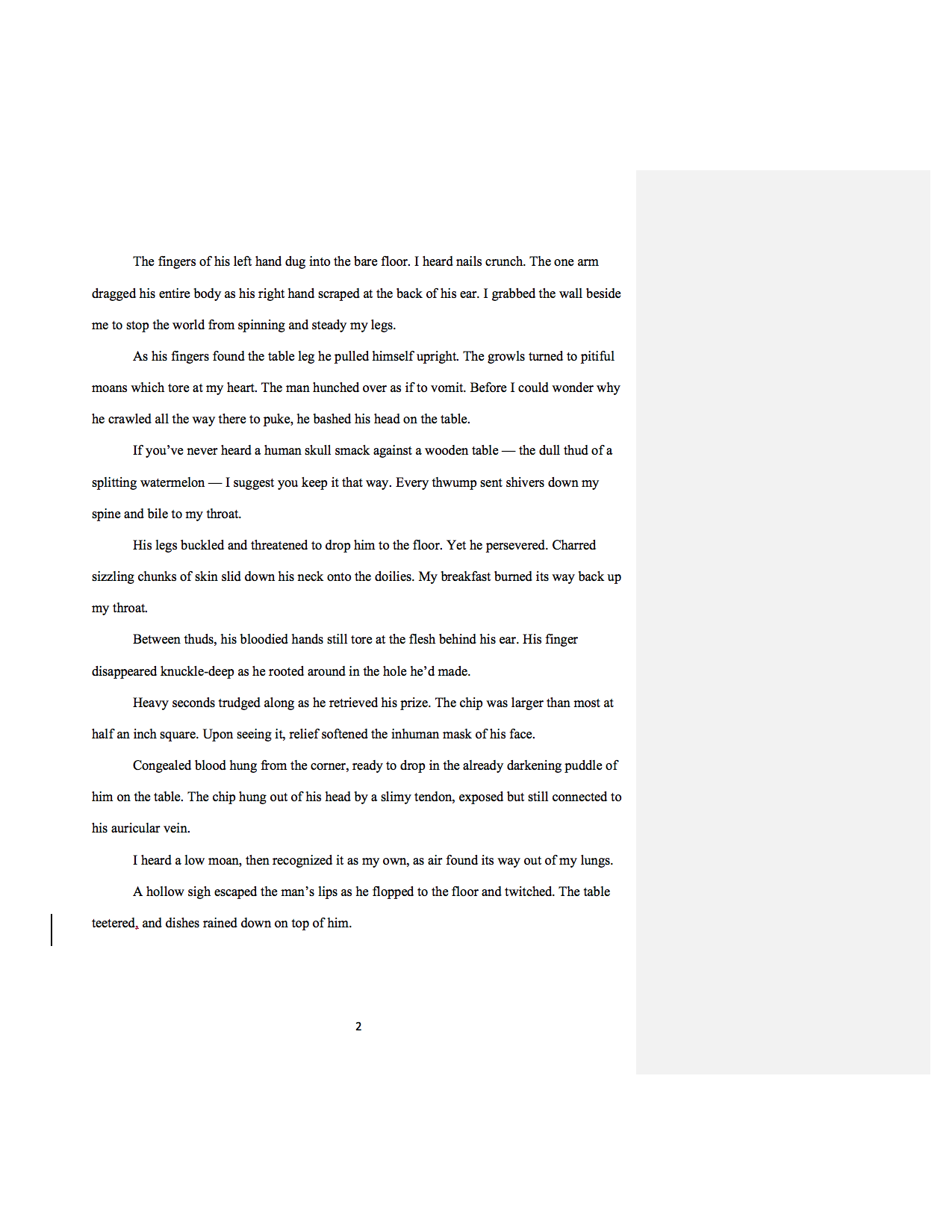
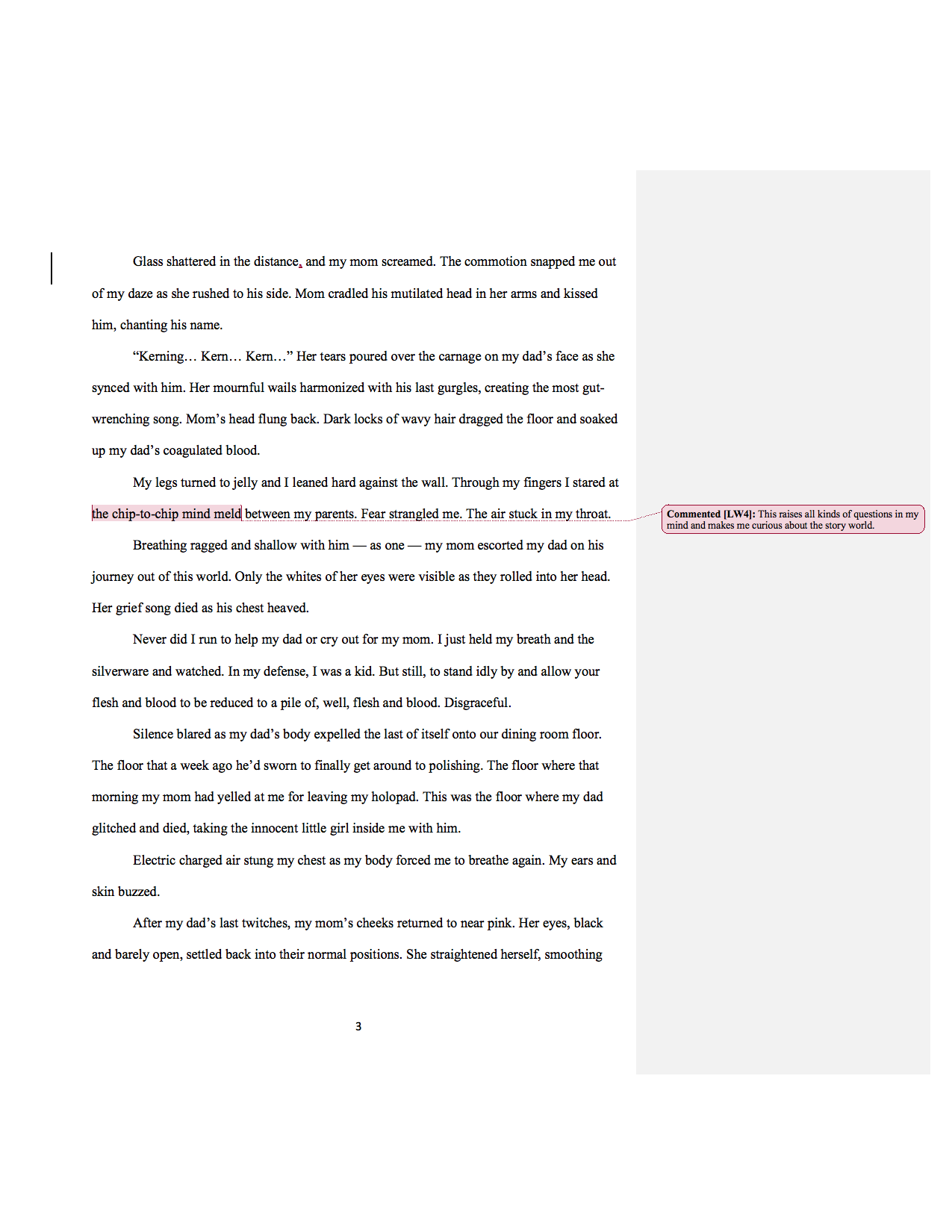
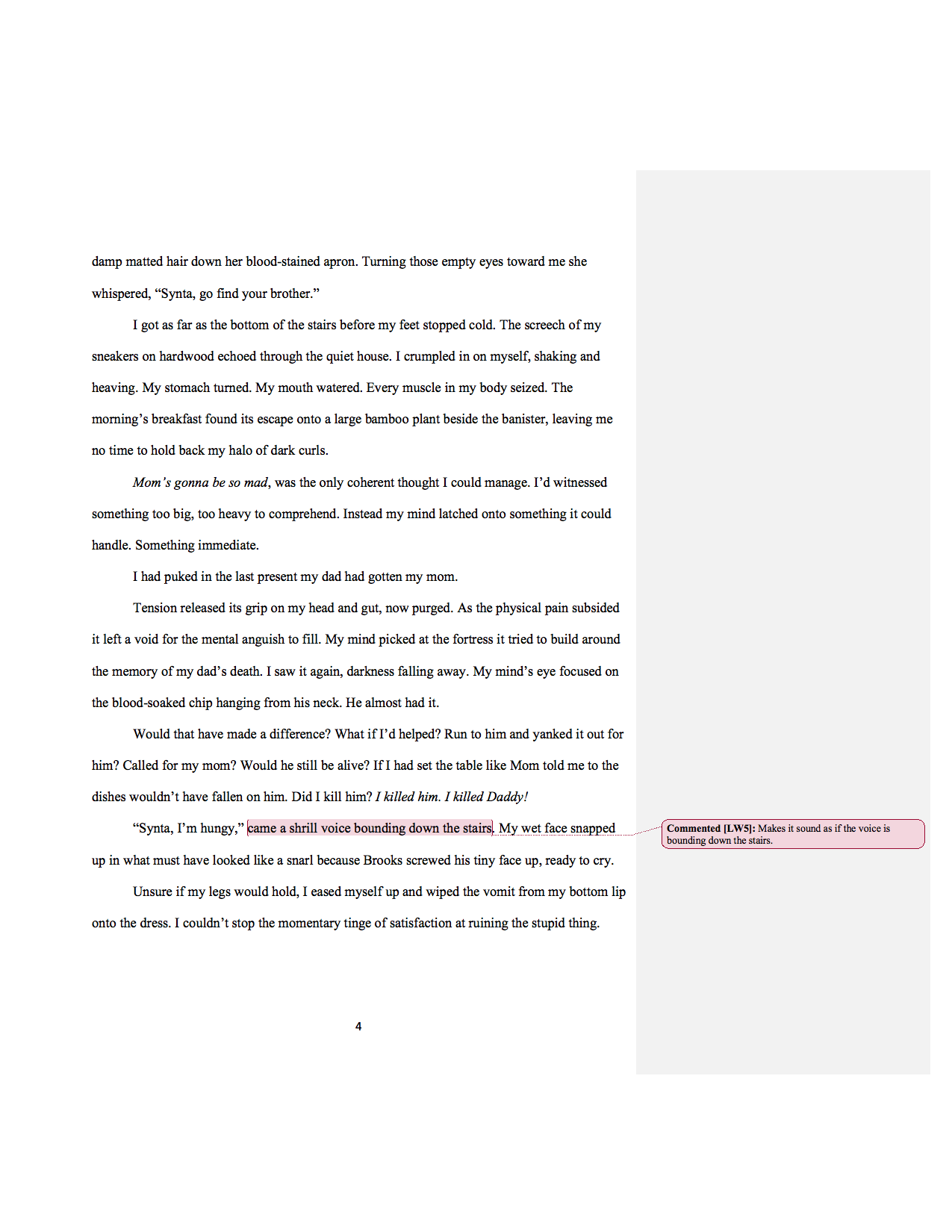
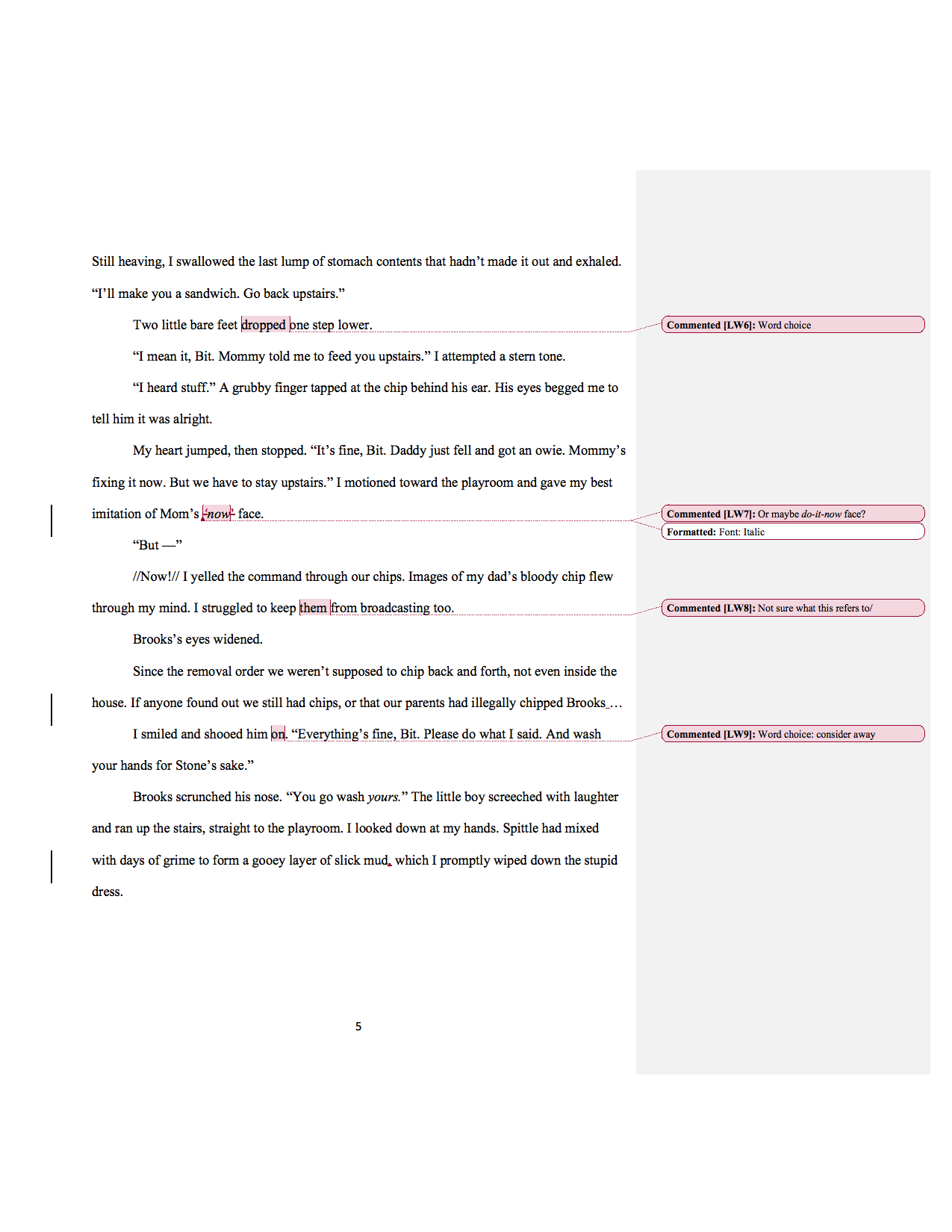
About My Guest Editor
James Thorn writes post-apocalyptic and dystopian fiction, including The Final Awakening trilogy, which James co-writes with Zach Bohannon. Be sure to check out The Post-Apocalyptic Reader’s Guide, a great resource if want to find out about what it takes to deliver a satisfying story in this category. To find out more about James, his podcasts, and Authors on a Train, visit jthorn.org.
7 Day Scene Intensive
Scenes aren’t the whole story when it comes to writing a great story, but mastering scenes is the most efficient way to become a better storyteller because you internalize macro story structure with the smallest complete unit of story. The 7 Day Scene Intensive is designed to help you master scenes with information, practice, and a quick loop of supportive, specific feedback, similar to what we offer on the podcast.
The 7 Day Scene Intensive is online May 27–June 2, 2018, so there's no travel involved. Because we offer individualized feedback each day for seven days, we're limiting the intensive to four participants. If your story isn't where you want it to be, this might be just what you need. You can find all the details here.
The Writership Index
Listeners have asked for an index of the podcast episodes and the topics discussed, so we've put together a Google spreadsheet containing details of each episode, its airdate, author name, story title, genre, story type, published location, author website, and topics discussed. Get access to the spreadsheet here.
Join the Writership Book Club!
Join the Writership Quarter Masters Book Club! Each month I'll choose a book from your suggestions. We'll read it then discuss it in our (virtual) book club meeting.
In May we're reading The Emperor's Soul by Brandon Sanderson. For more information, visit our Patreon page.
Image courtesy of getstencil.com and punsayaporn/bigstock.com.

